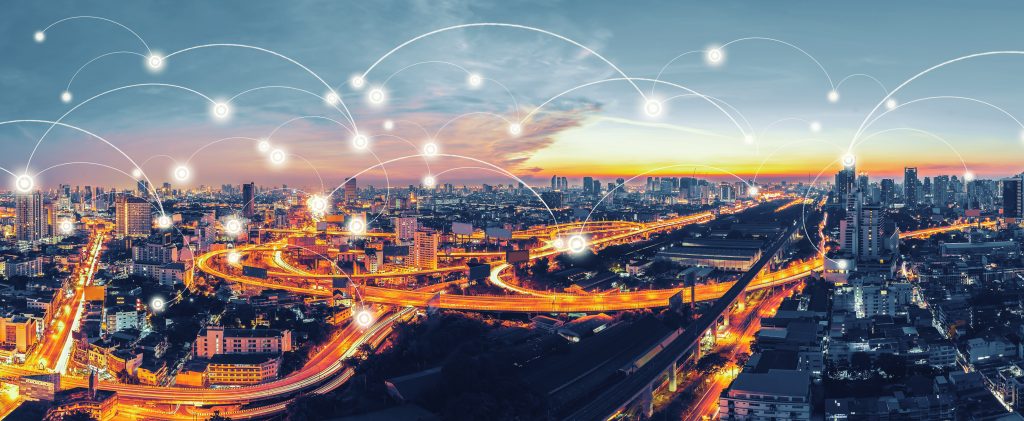This blog post is an excerpt from GovLoop’s recent guide, “The Internet of Things: Challenges and Opportunities for Government.”
It’s no secret that the pace of digital transformation is impacting every aspect of our society, including government. And as the public sector looks to the future, they’re figuring out how to best serve citizens more efficiently, as well as to hire and retain workers by providing better technology and a more modern work environment.
That’s where the concept of a digital workplace comes in. The digital workplace is where people, technology, and the workplace converge to improve agility, productivity, and engagement. This environment enables employees to find the same type of consumer-oriented experiences they enjoy in their personal lives, with one-stop shopping for the technology tools to do their work more effectively and effortlessly.
But the digital workplace doesn’t happen without having the right technology in place – particularly as it relates to managing the Internet of Things (IoT) and leveraging cloud-based analytics platforms. To understand how government agencies can create a digital workplace with IoT, GovLoop spoke with Jeremy A. Wilson, Federal CTO, at BMC, a leader in software solutions that helps organizations transform into digital enterprises.
Wilson explained that as government organizations strive to become digital enterprises, they need to make the best use of their existing assets and infrastructure, while introducing new technology and tools that drive their missions forward and keep their resources secure.
More than one-third of federal workers will be eligible for retirement by September 2017, and many government agencies are having difficulty attracting younger personnel. To address these issues, government IT leaders are working to create this “digitalfirst” workplace. The rapid adoption of digital technology in the commercial world is driving government agencies to fundamentally rethink how they deliver services to their internal users and external constituents. This provides the platform to vastly improve cross-collaboration between government agencies and maximize employee agility, productivity, and engagement.
But a workplace cannot be truly digital first without the support of the right technology – particularly as it relates to the data and insights that IoT can offer.
“There will be nearly 21 billion IoT connected devices worldwide by 2020,” Wilson explained. “IoT is transforming the ‘traditional’ environment and is paving the way for a modern digital workplace.” With this transformation, it is important that government agencies begin to break down some of the barriers between people, technology and the workplace, while also keeping necessary process enforcement and governance.
Aggregating, managing, delivering, and analyzing hardware, software, and services from multiple cloud and on-premises vendors that workers choose isn’t easy. Each offering may have its own interface, which can be confusing and frustrating to use. Additionally, unless government organizations have the proper analytics tools in place when collecting data generated by IoT they will not be able to maximize the potential value of this data. Most importantly, it’s critical to keep that data secure.
“As the workplace becomes more digital centric, there is an ever-increasing number of ways devices can be compromised,” Wilson said. “Government needs to take steps to establish a comprehensive defense methodology and security infrastructure to identify and mitigate these threats.”
Agencies also need to have the right cloud-based, big data analytics platform in place. The right solution will help agencies collect and analyze machine, business, and operational data – from virtually any source, in real time – as well automatically learn behavior of machine data, the service desk, business activities, and social metrics.
“The more devices that you have connected in this modern digital workplace, the more data you have to analyze,” Wilson said. “This is one of the biggest problems we have today, there is too much data and not enough people. Government agencies must start looking at new methods to visualize and consume data as we make this shift. They must become more efficient in keeping data secure and in analyzing it for trends.”
BMC can help government agencies power their digital workplaces. With IoT, BMC provides security and operations with greater insights to quickly identify, prioritize, and remediate threats, along with a secure cloud-based analytics platform. The digital service management platform from BMC empowers IT to drive digital innovation, with exceptional IT service management capabilities that help organizations scale and automate IT processes.
Leveraging data and the right technology can help government organizations meet the challenges of rising citizen demands and attract new talent. The digital workplace will require sophisticated, intuitive technology, comprehensive service offerings, and a partner like BMC with the solutions and expertise to help agencies drive change.
